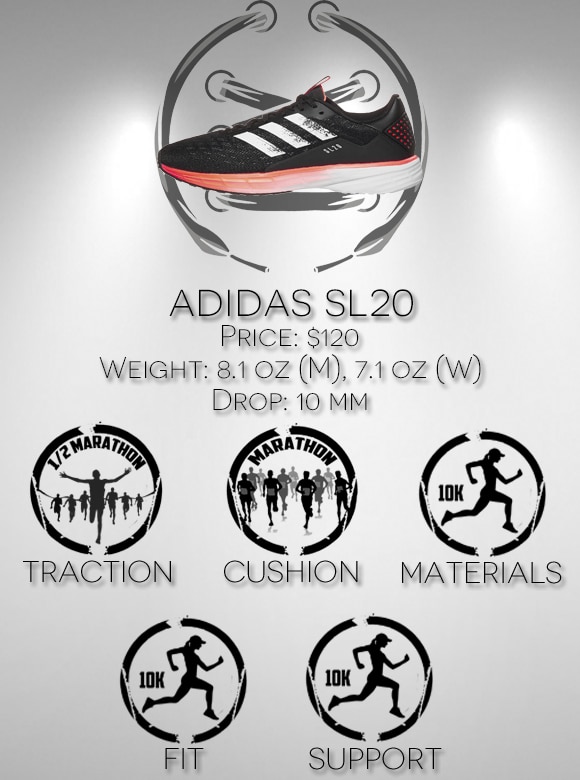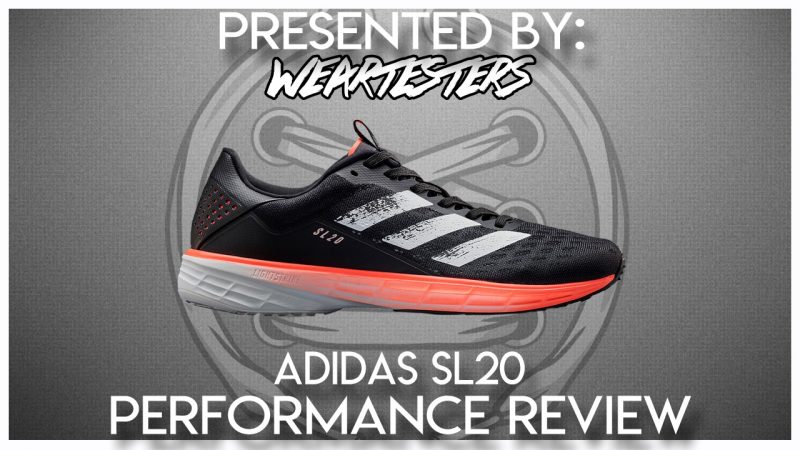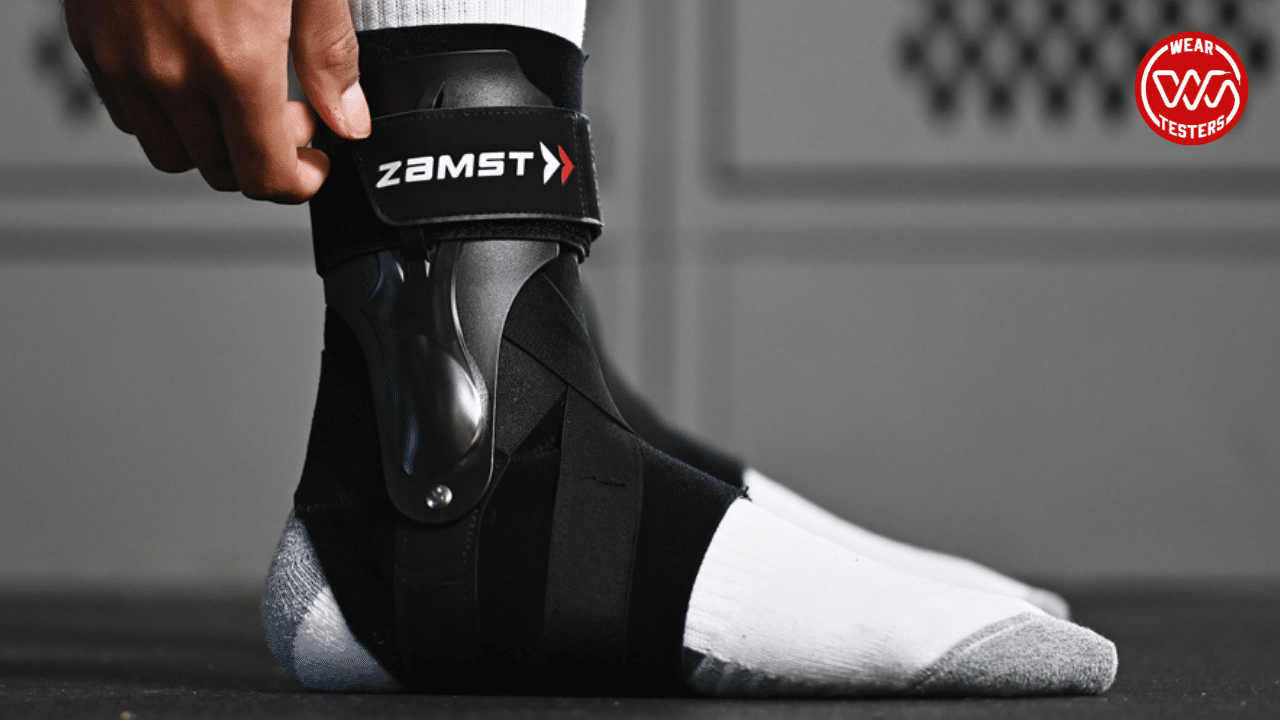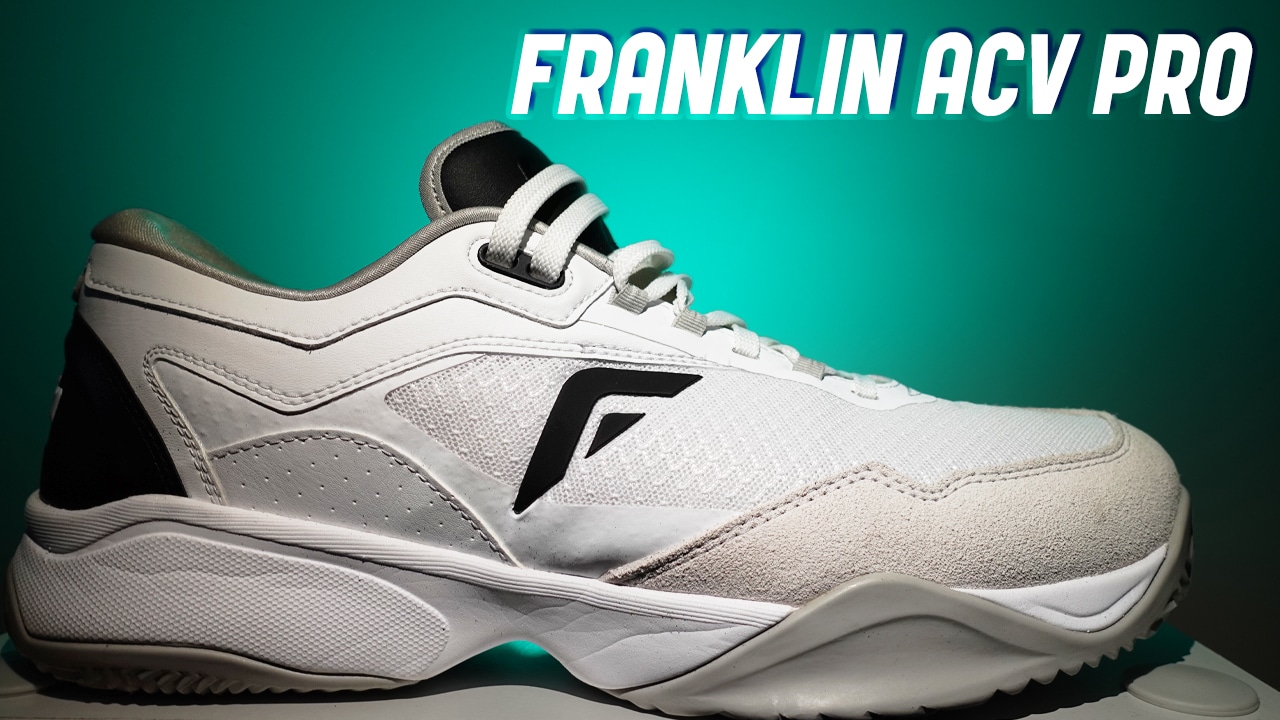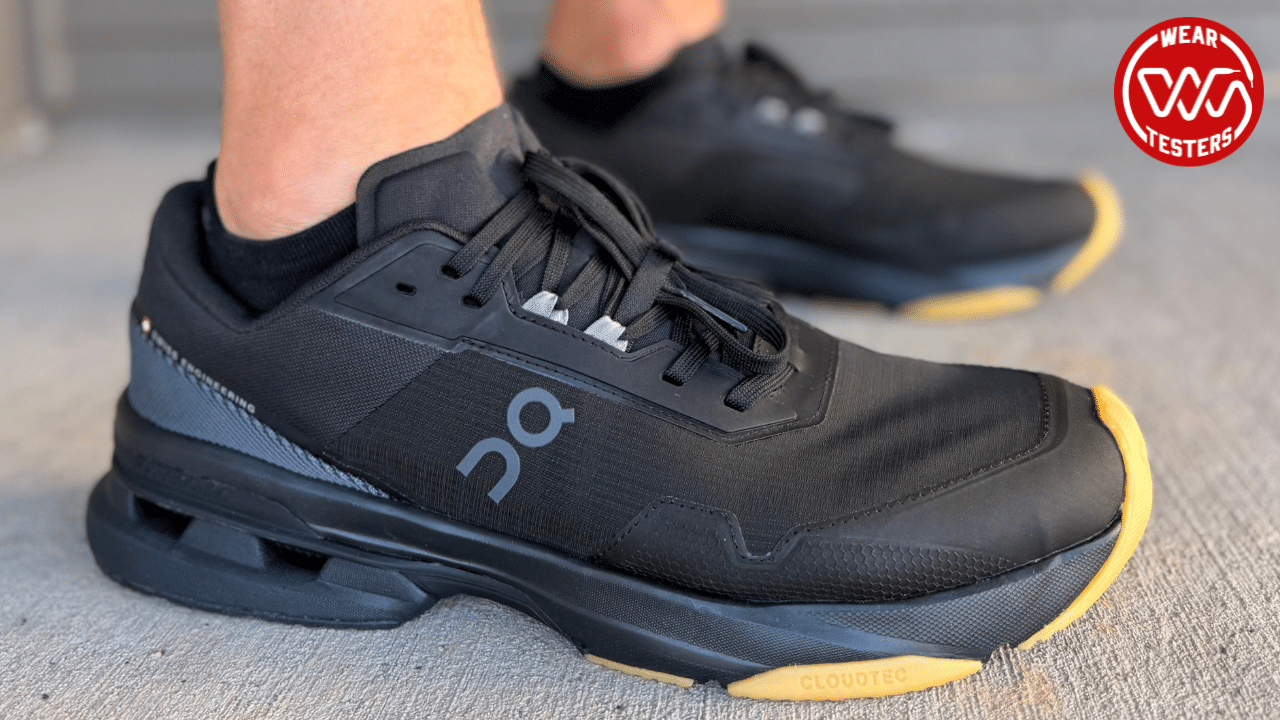The adidas SL20 is one of the first running shoes to feature adidas’ new Lightstrike cushioning. We’ve been waiting for Lightstrike to come to running shoes since it’s debut last year in the adidas N3XT L3V3L basketball shoe. Lightstrike is lightweight while also providing a nice well-balanced ride. Does it work for running? Let’s find out…
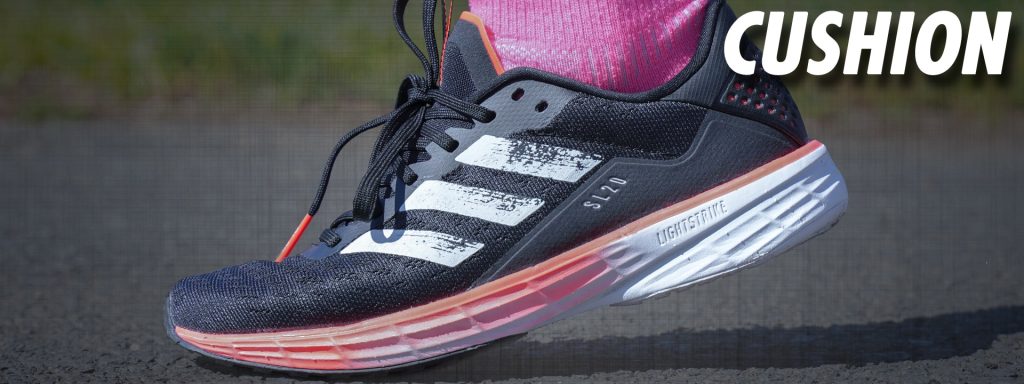
Cushion
Drew: I really like Lightstrike for running. I like it enough that I wore the adidas SL20 in a recent 10k race. At around 8 ounces, it’s just light enough to use as a race day shoe (though probably not if you’re an elite runner).
The Lightstrike is actually light enough that the majority of the SL20’s weight comes from the upper. Most shoes are bottom heavy so having this one be reversed feels great. It makes your brain believe you don’t have much on your feet. Mentally, that’s great during speed workouts and on race days. I constantly found myself reaching for the SL20 before speed workouts.
The impact protection is also top notch. There’s only 14mm of Lightstrike in the forefoot but I never felt too much ground impact. Because there’s so little foam, I also expected the foam to bottom out on long runs or after I put a bunch of miles on the shoes. But here I am with 65+ miles in the shoes, having done a couple 10+ mile runs in them, and they still feel great.
Again, Lightstrike is great for running. I’m convinced adidas is just scratching the surface of what’s possible with a Lightstrike-based running shoe. The fact that the first iteration is so good is a great sign of things to come.
Jodi: Being married to Chris, I’ve heard tons of great things about Lightstrike in the basketball world, so I was pretty excited to see what it was all about. I’m actually surprised it didn’t hit the running world first since in a lot of ways, us runners are guinea pigs. I have to say, the cushion system lives up to the hype. It’s flexible, bouncy, and light. And has great impact protection. Every time I ran in these I felt like a sprinter, super quick. And my mile splits for those days reflected the feeling. Placebo effect? Maybe. But I’m not complaining about it.
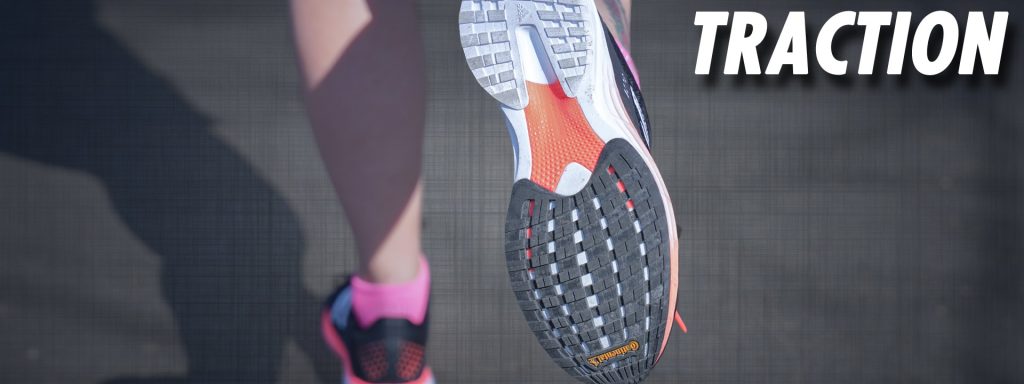
Traction
Drew: Continental rubber is adidas’ go-to rubber compound and they’ve used it to great effect on the SL20. It rained the night before my recent 10k and the entire course was still wet when we toed the line at 7am. After the race, I heard several people complain that the roads felt slippery and that they couldn’t get great traction. I had to think about why they would have problems because I didn’t even notice the moisture. The SL20’s outsole gripped just like a normal day despite the wet conditions.
It wasn’t a surprise because while training in the SL20 I ran in rainstorms and several other iffy conditions and never had a problem with the traction. It’s one of those shoes where you don’t even have to think about your footing because every footfall is secure.
Jodi: Continental rubber is my jam, so I’m always happy when adidas uses it on its runners. I think the way they incorporate it with the stretch web pattern not only helps for great grip on the roads but also helps with whatever cushion system is being used. It’s just another great flexible layer to keep all your joints happy.
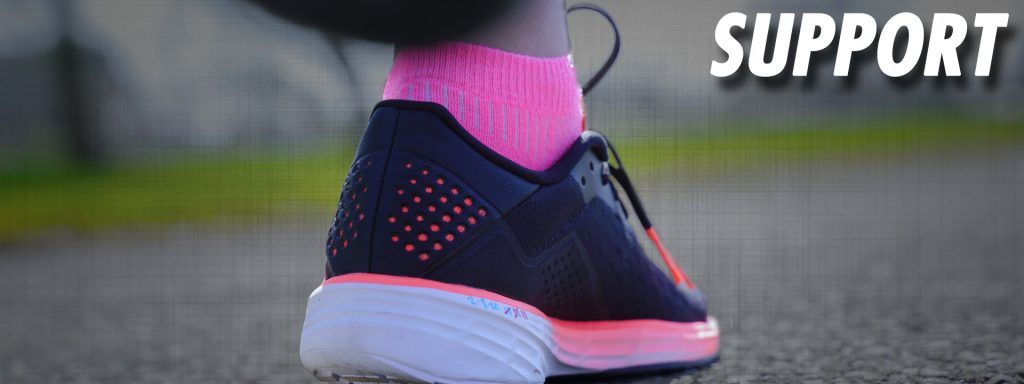
Support
Drew: The support is solid enough to compete with most everyday trainers. Adidas included their standard Y-shaped Torsional plate at the midfoot, went with a fairly beefy heel counter that extends beyond the heel on both the medial and lateral sides of the foot. The SL20 uses a fuse overlay along the bottom third of the shoe that starts at the heel and extends all the way to the forefoot on both sides of the upper. It does the job of really keeping you on the footbed. Then the ball of the foot also sits ever so slightly inside the Lightstrike midsole to help prevent rollovers. Finally, the midsole flares out a bit on both sides of the forefoot to provide a wider base for pushing off.
It’s a full package of support despite the lightweight nature of the shoe. I feel adidas went above and beyond what it’s expected from an everyday trainer in this weight class.
Jodi: As Drew has already stated, adidas really went all out making sure it would be next to impossible to not feel supported by the SL20. The heel cup is super rigid and extended along both sides of your foot. Then up top they gave you plenty of padding that wraps all the way around to the where the collar meets your ankle. And you can see your midsole peeking way out when you’re standing in them. You would have to land pretty awkwardly for your ankle to roll in these guys.
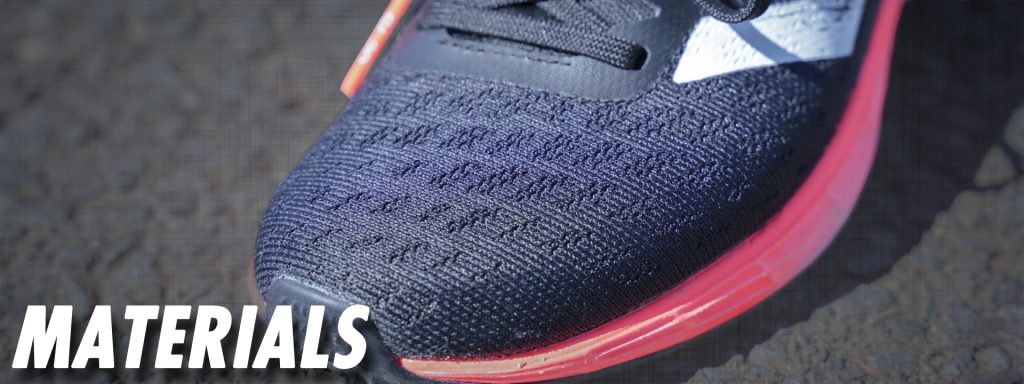
Materials
Drew: The SL20 features a typical mesh upper with fuse overlays. The tongue is a thin, stretchier mesh that is sewn to the upper. The laces are fairly typical and the insole is extremely thin and doesn’t really help the step-in comfort at all. So while the materials are pretty blah, they do the job, and allow adidas to keep the SL20 at the $120 price point. I like the trade offs they made because the price is a huge selling point of this shoe.
Jodi: There is absolutely no stretch in the materials, not even anywhere on the tongue, which is also attached to the upper. And because of those two things, I really gotta talk about the fit.
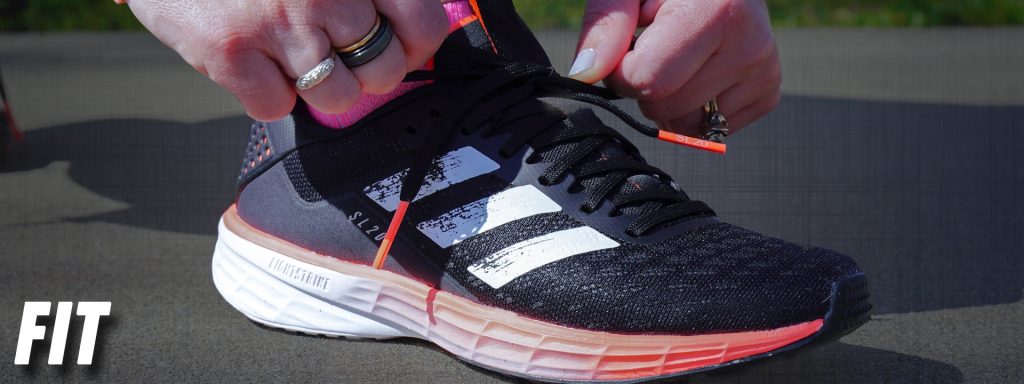
Fit
Drew: The adidas SL20 fits true to size. Some narrow footers may notice some puffiness in the toe box when they lace the shoe up tight. This is a result of the way adidas sewed the tongue to the upper. The tongue/upper combo could have been executed better but in practice the excess toe box material didn’t annoy me or get in the way. This is where using a flexible mesh helps hide the issue. The thin tongue could also fold up a little while putting the shoe on but the pull tab helps sort that out.
It’s not a perfect upper but it gets the job done and let’s the real star of the shoe, the Lightstrike cushioning, shine.
Jodi: Just in case anyone is new to my running reviews, I’m a wide footer. So if you are also a wide footer you’re going to want to stay tuned. As fantastic as this shoe was in the cushion department I struggled greatly with how the shoe fit. I feel like the length was half a size too long, but I could not have gone down a half size because there was no stretch in the upper and the shoe fit me really snug. Also, the tongue that was attached to the upper would somehow fold on itself always on my left foot and it would run between the bones on top of my foot. So I’d have to work at getting that shoe on just right almost every time I’d be getting ready to get out the door. It’s still a great shoe despite those things, definitely not a deal breaker for me. But they are used now for runs that I know will be under 45 minutes. Anything over that and I know I’m going to be feeling uncomfortable pretty quickly.
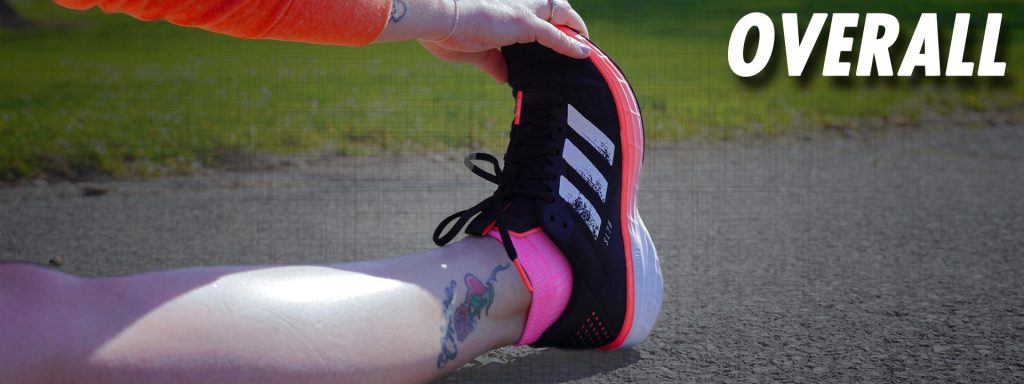
Overall
Drew: The adidas SL20 proves that Lightstrike cushioning in running shoes is a great option. For $120, you get an amazing cushioning experience, top tier traction, solid support, basic materials, and a few ignorable fit issues. But even if it was just the Lightstrike experience alone, I’d recommend these shoes. It’s a cushion that’s really fun to run in and worth the money.
Jodi: I’m pretty happy with what adidas did with its first Lightstrike runner. Dare I say that the cushion could take over the almighty Boost? I can definitely see it being used in a lot of future runners. In fact, I hope they do. If you’re looking for a runner that feels fast, has solid cushion, great support, excellent traction and you have an average sized foot, I’d definitely recommend these. If you have wide feet like me or even very narrow feet, I’d go in store and try them on first. Make sure you can handle the way they fit because like Drew and I both said, due to the way the upper is constructed there’s no way to hide any flaws.
